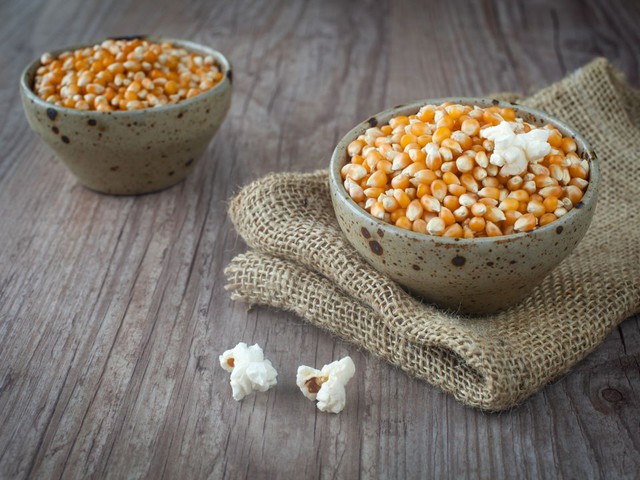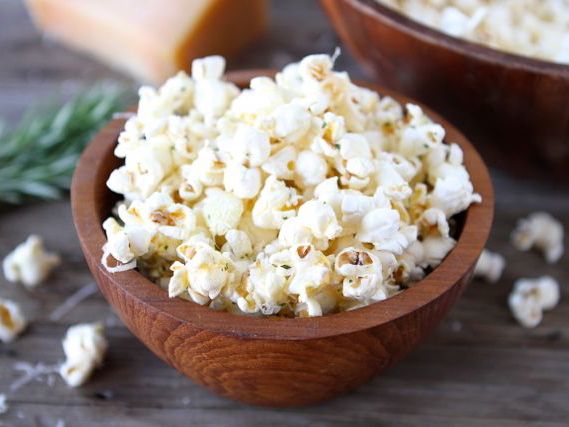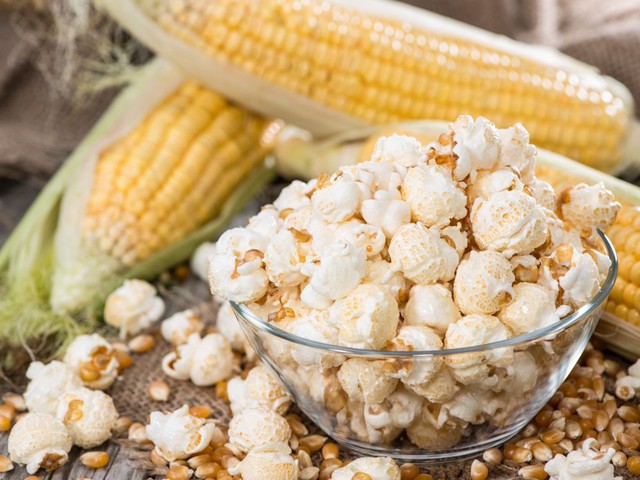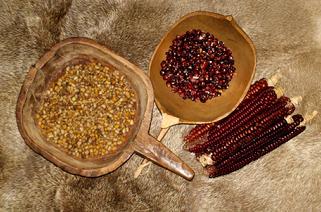
No Popcorn: The Question of Popcorn at the ‘First Thanksgiving’
The popcorn problem is a perennial question. It stems from a “First Thanksgiving Day” breakfast scene in a novel by Jane G. Austen, Standish of Standish (1889), p. 281:
“The meal was a rude one looked upon with the dainty eyes and languid appetites of to-day, but to those sturdy and heroic men and women it was a veritable feast, and at its close Quadequina with an amiable smile nodded to one of his attendants, who produced and poured upon the table something like a bushel of popped corn, – a dainty hitherto unseen and unknown by most of the Pilgrims. All tasted, and John Howland hastily gathering up a portion upon a wooden plate carried it up to the Common house for the delectation of the women, that is to say, for Elizabeth Tilley, whose firm young teeth craunched [sic.] it with much gusto.”
 It’s a good story, but not good history. The only historic description of the event comes from Mourt’s Relation, a 1622 source, in which there is no mention of popcorn. In addition, this source was forgotten until ca. 1822, and the event, which appears to have been a secular English harvest celebration, was only first described as the “First Thanksgiving” by Alexander Young in his Chronicles of the Pilgrim Fathers (1841) in a footnote on page 231.The event was not a Calvinist thanksgiving of the type celebrated by the Plymouth colonists, which was a religious observance at church, and would not have lasted several days, included non-Christian guests or secular recreations. The Pilgrim 1621 “First Thanksgiving” was thus invented in Victorian times, and the Austen story is hardly reliable historical evidence.
It’s a good story, but not good history. The only historic description of the event comes from Mourt’s Relation, a 1622 source, in which there is no mention of popcorn. In addition, this source was forgotten until ca. 1822, and the event, which appears to have been a secular English harvest celebration, was only first described as the “First Thanksgiving” by Alexander Young in his Chronicles of the Pilgrim Fathers (1841) in a footnote on page 231.The event was not a Calvinist thanksgiving of the type celebrated by the Plymouth colonists, which was a religious observance at church, and would not have lasted several days, included non-Christian guests or secular recreations. The Pilgrim 1621 “First Thanksgiving” was thus invented in Victorian times, and the Austen story is hardly reliable historical evidence.
 As far as can be ascertained, there was no true popcorn or podcorn in the eastern New England region in 1621 or at the “First Thanksgiving”. It hasn’t been found archaeologically, and there isn’t any New England reference to the popcorn we know today in the 17th century. Sweet corn is documented as only arriving in the region ca. 1779 (Mangelsdof, p. 110), and popcorn may well have arrived in a similar way from the upstate New York area. The presence of the larger flint and/or flour corn in New England is well documented in the studies on corn (such as Paul Mangelsdorf, Corn Its Origin, Evolution and Improvement (Cambridge, 1974); Arthur Parker, “Iroquois Uses of Maize,” in Parker on the Iroquois, Fenton, ed. (Syracuse, 1968); Paul Weatherwax, Indian Corn in Old America (New York, 1954). The first widespread use of corn in the Northeast is now set at ca.1100, A.D. (Bruce D. Smith, Rivers of Change, (Washington, 1992), p. 292), which might account for a fairly specialized selection of maize varieties here 500 years later.
As far as can be ascertained, there was no true popcorn or podcorn in the eastern New England region in 1621 or at the “First Thanksgiving”. It hasn’t been found archaeologically, and there isn’t any New England reference to the popcorn we know today in the 17th century. Sweet corn is documented as only arriving in the region ca. 1779 (Mangelsdof, p. 110), and popcorn may well have arrived in a similar way from the upstate New York area. The presence of the larger flint and/or flour corn in New England is well documented in the studies on corn (such as Paul Mangelsdorf, Corn Its Origin, Evolution and Improvement (Cambridge, 1974); Arthur Parker, “Iroquois Uses of Maize,” in Parker on the Iroquois, Fenton, ed. (Syracuse, 1968); Paul Weatherwax, Indian Corn in Old America (New York, 1954). The first widespread use of corn in the Northeast is now set at ca.1100, A.D. (Bruce D. Smith, Rivers of Change, (Washington, 1992), p. 292), which might account for a fairly specialized selection of maize varieties here 500 years later.

Flint corn - photo from woodlandindianedu.com
Flint corn has a hard corneous endosperm like popcorn and when heated (or “parched”) will expand rather like a half-popped piece of popcorn. We have tried this with several antique and modern varieties. However, flint corn was most often prepared as hominy or samp by boiling, which is the most palatable way to use it, then and now. Historically it was the flour corn, with its soft, floury endosperm, which was favored for parched corn, the process most analogous to popping corn. While one can not be dogmatic on the fact, the assertion that popcorn was part of the quasi-mythic First Thanksgiving should be rejected.
Article from: http://lenapeprograms.info/celebrate-november/thanksgiving-food/
